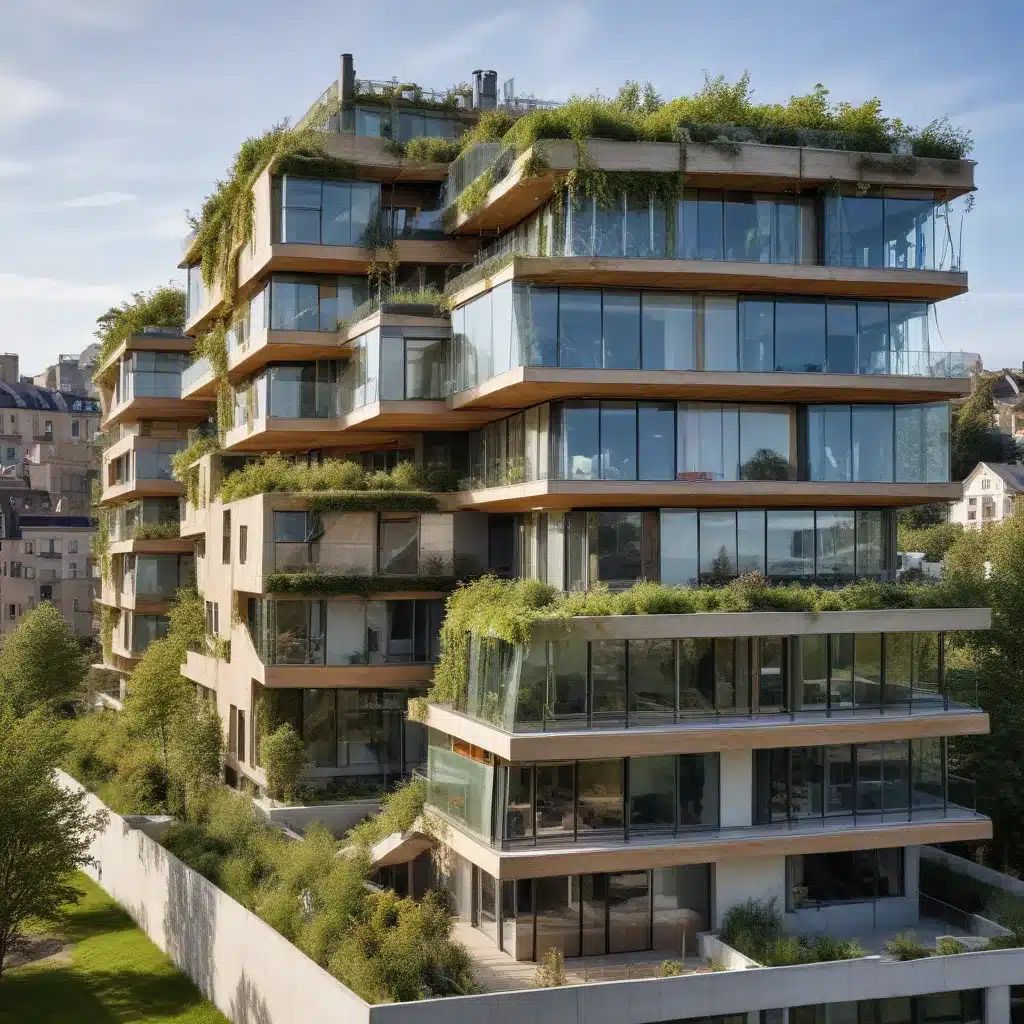
As the world reckons with the urgent need to address climate change, the built environment has emerged as a critical battleground in the fight for sustainability. Across Europe, architects, urban planners, and policymakers are embracing sustainable architecture as a key lever in the broader energy transition, exploring innovative designs, materials, and technologies to reshape our cities and communities for a low-carbon future.
The Role of Architecture in Decarbonization
At the heart of this movement is a holistic, systems-based approach to architecture that seeks to minimize a building’s environmental impact across its entire lifecycle—from resource extraction and manufacturing to operation and end-of-life. Integrated building design strategies, for example, optimize a structure’s orientation, form, and envelope to enhance passive heating/cooling and natural ventilation, reducing reliance on energy-intensive mechanical systems. Meanwhile, the integration of renewable energy technologies, such as rooftop solar PV and building-integrated wind turbines, allows structures to generate their own clean power, moving closer to net-zero or even net-positive energy performance.
Passive design principles, like thermal mass, shading, and daylighting, are also gaining traction as cost-effective ways to enhance building energy efficiency. In Sweden, the award-winning Kajstaden residential development in Västerås employs an innovative double-skin façade system that harnesses solar radiation for heating while enabling natural cross-ventilation, cutting energy use by over 50% compared to conventional construction. Similarly, the Powerhouse Brattørkaia in Norway, a collaboration between architecture firm Snøhetta and energy company Enova, has been designed as a positive-energy building, generating more renewable electricity than it consumes through a combination of PV panels, heat pumps, and energy-efficient systems.
Sustainable Building Materials and Construction Practices
Alongside innovative design approaches, the construction industry is also exploring new materials and building techniques to lower the embodied carbon of the built environment. Low-carbon concrete mixes featuring supplementary cementitious materials like fly ash and ground granulated blast-furnace slag are gaining traction, reducing the carbon footprint of one of the most widely used construction materials. In the UK, the recently completed headquarters for the Wear Point winery in Wales utilized a novel rammed-earth wall system, leveraging the thermal mass and sequestration properties of earth to create a near-zero-energy building.
Beyond individual structures, the adoption of circular economy principles in construction—including design for disassembly, material reuse, and closed-loop recycling—is crucial for minimizing waste and optimizing resource efficiency. In the Netherlands, the Circl pavilion in Amsterdam serves as a showcase for these principles, featuring a modular, demountable design and the extensive use of secondary raw materials. Initiatives like the EU’s Level(s) framework and national green building certification schemes are also driving the adoption of sustainable construction practices across Europe.
Energy-Efficient Building Technologies
Complementing these material and design innovations, the proliferation of advanced building technologies is unlocking new levels of energy performance and grid integration. High-performance envelope systems, incorporating superinsulation, dynamic glazing, and thermal bridges, can dramatically reduce heating and cooling loads. Meanwhile, smart building automation and controls allow for granular optimization of energy use, seamlessly coordinating HVAC, lighting, and other building systems. The Equinix data center in Blanchardstown, Ireland, for instance, achieves a power usage effectiveness (PUE) of 1.15 through a combination of advanced cooling technologies, renewable energy integration, and real-time data analytics.
As the energy grid evolves to incorporate greater shares of variable renewable sources, the role of buildings as flexible energy assets is also gaining importance. Through demand response programs, building owners can dynamically adjust their energy consumption to support grid balancing, while energy storage technologies, such as thermal batteries and behind-the-meter batteries, allow structures to store and dispatch renewable energy as needed. In Germany, the Heliotrope building in Freiburg, designed by architect Rolf Disch, features a rotating, sun-tracking design and an integrated photovoltaic/thermal system that enables it to produce more energy than it consumes, with the excess fed back into the grid.
Urban Planning for Sustainable Communities
The energy transition in the built environment extends beyond individual buildings, as architects and urban planners work to reshape entire communities and cities for sustainability. Transit-oriented development, which concentrates mixed-use, high-density projects around public transportation hubs, reduces reliance on private vehicles and associated emissions. In the Netherlands, the new Bloemendaal aan Zee district near Amsterdam seamlessly integrates residential, commercial, and recreational spaces with a state-of-the-art tramway system, exemplifying this approach.
At the district or neighborhood scale, integrated energy solutions are also gaining traction, leveraging the synergies between different building types and energy end-uses. The Nordhavn district in Copenhagen, for instance, features a pioneering low-temperature district heating network that distributes surplus heat from commercial and industrial facilities to residential buildings, improving overall system efficiency. Moreover, the integration of nature-based infrastructure, such as urban forests, green roofs, and permeable surfaces, can help mitigate the urban heat island effect, manage stormwater runoff, and enhance livability—further contributing to the sustainability of the built environment.
Conclusion
As Europe forges ahead with its ambitious climate goals, the transformative power of sustainable architecture is becoming increasingly clear. By embracing innovative design strategies, sustainable materials, and advanced building technologies, architects, urban planners, and policymakers are reshaping the built environment to drive the energy transition and create a more resilient, low-carbon future. From individual structures to entire communities, the principles of sustainable architecture are proving essential to achieving the continent’s net-zero aspirations and laying the foundations for a sustainable tomorrow.
For more insights on Europe’s clean energy transformation, explore the European Future Energy Forum.







